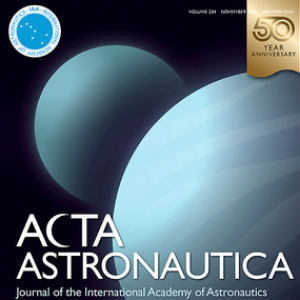The scientists of Samara University proposed deployment on space objects of the device “blowing out” debris from the dangerous orbit. The new way of protection will enable avoiding accidents in airless space and extending the service life of stations and satellites. Results were presented in Acta Astronautica.
Collision between a spacecraft and even a small piece of debris can cause great problems. Even a greater danger is posed by large orbital debris (a non-effective satellite or an old rocket stage), contact of which with any object in space may lead to complete destruction of even such large objects as International Space Station (ISS), said the specialists of Samara National Research University (Samara University).
They added that today the only way of prevention of collision with foreign objects is the correction of the orbit of space station either using its own engines or engines of spacecrafts docked to it. Speaking about the ISS, the specialists recalled that since 1999 38 such maneuvers have been carried out, each of which consumed large amount of fuel.
Researchers of Samara University proposed new way of space station protection against space debris. It supposes deployment on the object of the special spacecraft, which may dedock from “base” in case of danger and solve the problem.
“The difficulty is that we cannot accurately predict its trajectory for long periods of time. Potential danger of collision (dangerously close approach) becomes known approximately two days before this event, after that protocols of avoidance manoeuvre calculation are launched”, – said one of the authors of the development, Associate Professor of the Department of Theoretical Mechanics of Samara University Aleksandr Ledkov.
He explained that the engineered device will dedock from the station and fly to space debris. After approaching it will direct a jet of its electric propulsion engine at the space debris and “blow away” the space debris from the dangerous orbit as a hair dryer.
“We found 289 objects weighing more than 1 kg, which theoretically can pose a threat to the ISS. For each of the objects we calculated the manoeuvre of spacecraft: it dedocked from the ISS, flew into the plane of space debris orbit, approached it at a distance of 10 meters, directed a jet of ions created by electric propulsion engine at it, ions butted against the surface of the space debris and thereby created small breaking force; after the space debris orbit stopped being a threat, the spacecraft returned to the ISS for refueling and servicing”, – the researcher explained.
Ledkov underlined that in case of the most successful configuration of station and large object the fuel expenditure for the manoeuvre may be reduced by almost 10 times.
“In the most beneficial case for our spacecraft when the space debris (for example, rocket stage weighing about 1,400 kg) and ISS move in plane, we can save 90% of fuel. Classic manoeuvre of ISS orbit correction needs about 2,000 kg of fuel. Our spacecraft will spend a little over 200 kg”, – added one of the authors of the development, Professor of the Department of Theoretical Mechanics Vladimir Aslanov.
Specialist remarked that for development of the device it was necessary to solve a lot of scientific problems, that is why students of Master’s Degree in the field of “Mechanics and Mathematical Simulation” of the Institute of Aerospace Engineering of Samara University actively participated in work.
The work was carried out supported by the Russian Science Foundation (fellowship No. 22-19-00160).
Source: ri.ria.ru
 RU
RU  EN
EN  CN
CN  ES
ES 